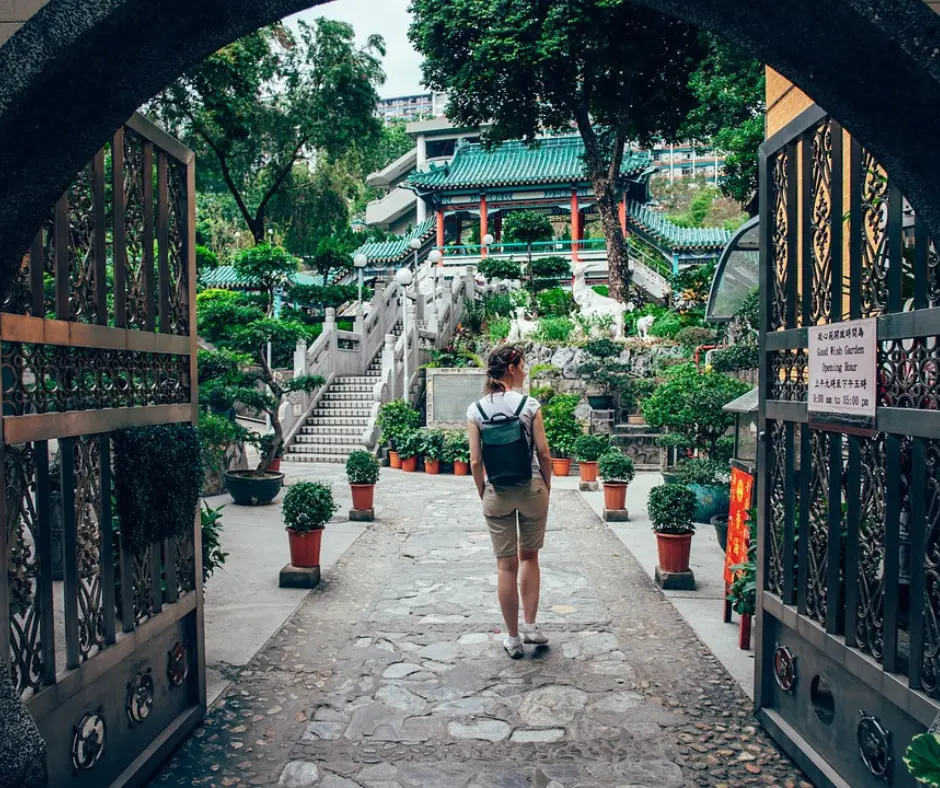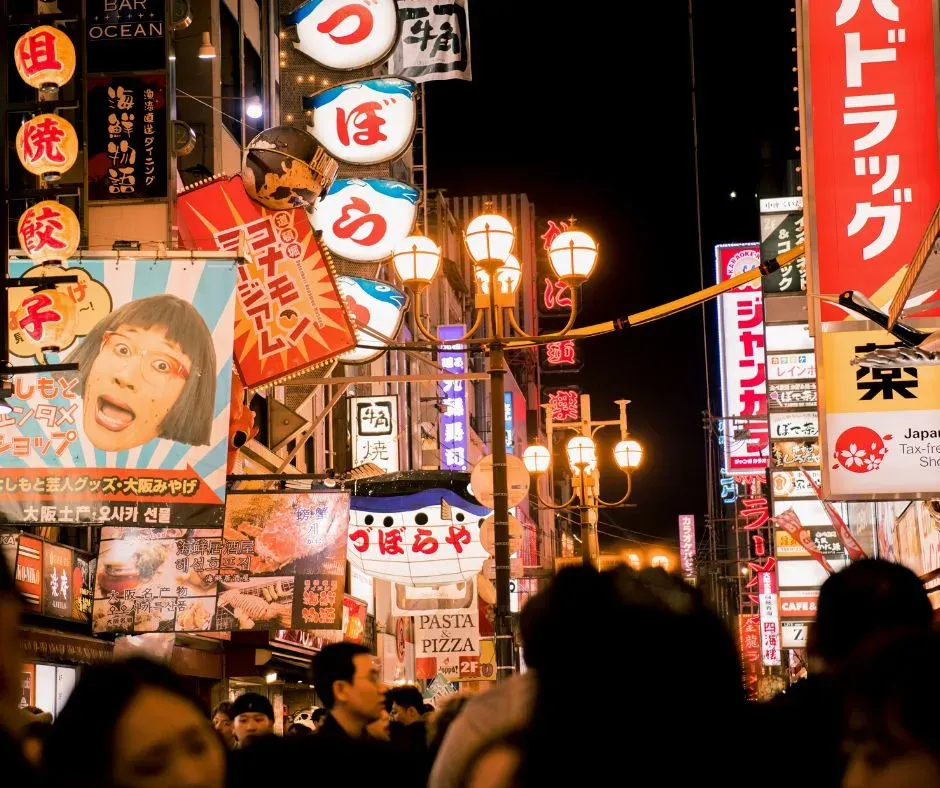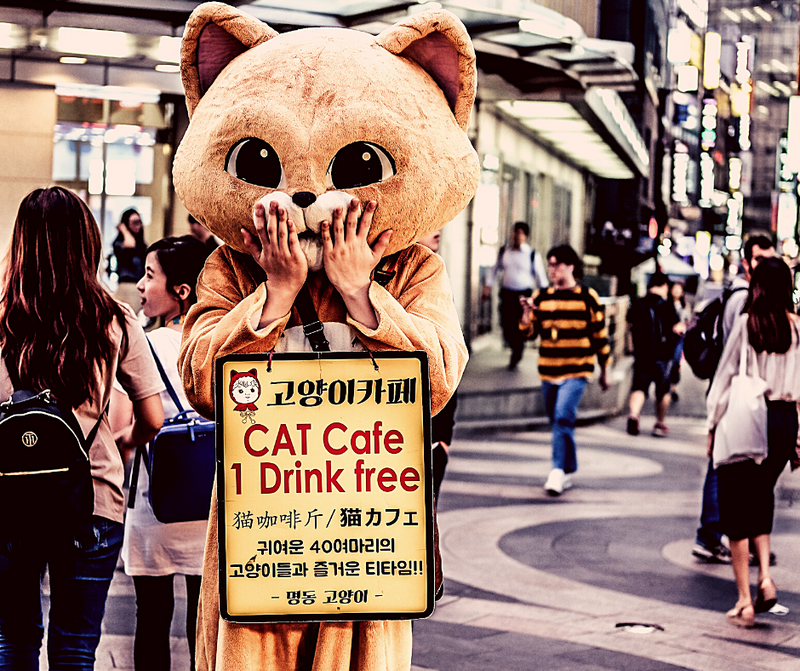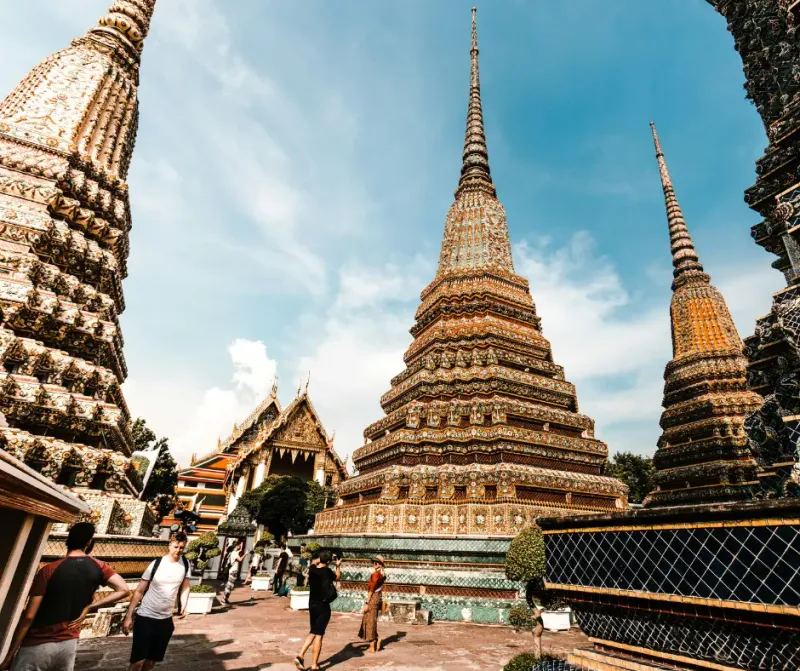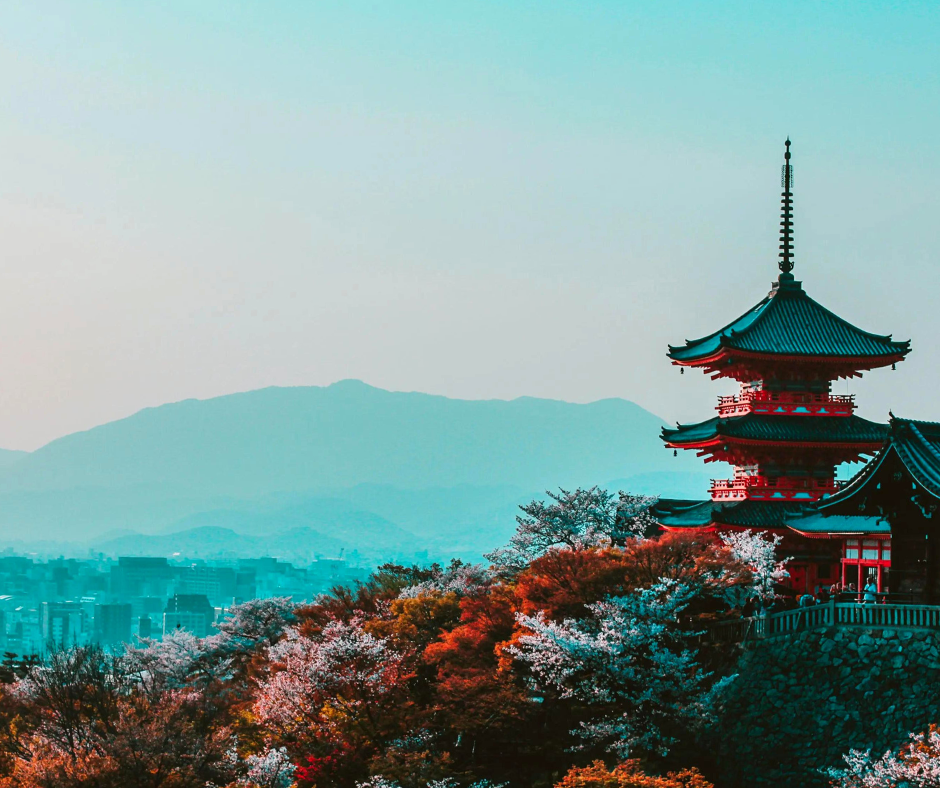Describing South Korea in only three words would include service, soju, and smartness. The technology-driven state in the southern part of the Korean peninsula is delivering superb quality of service and innovation directly extracted out of the gigantic Seoul's Digital Media City, a former landfill. Seoul is the world's leading smart city, integrating innovative technologies for its citizens, businesses, and environment that go align with the urban and regional planning policy. Having the Korean war (1950-1953) in mind, it is inspiring how South Korea rose from the ashes, just like Phoenix.
A rebirth might be necessary once one has experienced a proper night out in Seoul. In a country, where local schnaps soju is cheaper than water, there is no surprise that South Korea is famous for its drinking culture, extensive nightlife, and love for karaoke. Local chefs developed a whole cuisine on the cure for hangovers, which is made of beef broth, congealed cow blood, and bean sprouts. Let's dig into that dish later.
🌱 Travel health insurance for South Korea
🇰🇷 Entry requirements for South Korea
- Valid visa: Visa or K-ETA (Korean Electronic Travel Authorization) application. If you are a national citizen of one of the eligible countries, you can apply for the K-ETA application. K-ETA is valid for multiple entries within 2 years.
- Korean safety guidelines: You need to fill out a health questionnaire and travel record declaration (special quarantine report). On arrival, your health status will be checked by taking a quarantine survey and measuring your body temperature (thermal camera, ear thermometer, etc.).
✈️ How to get to South Korea
- Plane: The most common way to get to South Korea is by air. Incheon International Airport (ICN) in Seoul is the main gateway to South Korea, with flights from major cities around the world. There are also other international airports in South Korea, such as Gimpo International Airport (GMP) in Seoul and Busan's Gimhae International Airport (PUS).
- Overland: If you are coming from China, you can also enter South Korea by land through the border city of Dandong. The crossing is closed on the weekend and public holidays.
🚌 Public transport
- Subway: Seoul, Busan, Daegu, Gwangju, and Daejeon each have their subway systems and it is the easiest and fastest way to get around in the city.
- Taxi: Flagging down a taxi in South Korea is possible almost everywhere in the country. Taxis are relatively inexpensive, they are metered by distance, and they are safe and clean. It is useful to have the destination written down in the Korean language.
- Bicycle: Cycling is not recommendable, especially in bigger cities. There are often no separate bike lanes and cycling through the traffic can be dangerous. However, for mountain bikers, the country has some excellent mountain bike trails.
🏡 How to find a place
- Apartments: If you are looking for an apartment in Seoul, for example, you can use zigbang website, which guides you through the different districts. The site is in the Korean language, and to use it, download an extension for your browser, e.g. Google Translate, to translate the site into English, or your preferred language.
- Hotels: If you choose to book a hotel, make sure you check beforehand where it is located and that necessities are within walking distance including subway stations.
- Airbnb: The go-to booking system for short-term rentals. However, I am not a fan of Airbnb, and would only use it when other sources don't work. The fees skyrocketed in the last few years and I refuse to support it.
- Facebook groups: Have a look in digital nomad and/or expat Facebook groups to find a place.
🏘 Where to stay in Seoul
- Gangnam: Gangnam is a bustling commercial district in Seoul that is known for its upscale shopping, dining, and entertainment options. It is also home to several coworking spaces and cafes that cater to digital nomads.
- Hongdae: Hongdae is a trendy neighborhood that is popular among young people and artists. It has a lively nightlife scene, and many cafes and restaurants offer free wifi and power outlets for customers. It has several art galleries and live music venues.
- Itaewon: Itaewon is a multicultural neighborhood that has a large expat community. It is known for its diverse dining options and nightlife. You find several coworking spaces there as well as cafes suitable to work from.
- Yeonnam-dong: Yeonnam-dong is a more quiet, residential neighborhood that has become popular among digital nomads in recent years. It has several cafes and coworking spaces, and the streets are lined with trees and charming shops and cafes.
- Seongsu-dong: The up-and-coming neighborhood Seongsu-dong is known for its hip cafes, bars, and restaurants. It has a creative and artistic vibe, and there are several coworking spaces and cafes as well as
🧑🏻💻 Where to work from in Seoul
Coworking space
- Blue Pebbles: Blue Pebbles is located in the heart of Gangnam, the bustling commercial and business district in Seoul. The modern and minimalist design and natural light and greenery offer a peaceful and inspiring workspace. Blue Pebbles has a strong focus on community building and hosts regular events and workshops to connect its members and foster collaboration. A monthly pass with included high-speed internet and 24/7 access is available for 130 Euro.
Coffee shops
- Anthracite Coffee Roasters: Anthracite Coffee Roasters is a specialty coffee shop located in the Gangnam district. It has a minimalist and industrial design and offers a range of high-quality coffee blends and brewing methods. you will also find enough seating options with power outlets around.
- Coffee Libre: Coffee Libre is a specialty coffee shop located in the trendy Hongdae neighborhood. It has a cozy and inviting atmosphere and offers a range of high-quality coffee blends and brewing methods. Seating options are limited.
🏘 Where to stay in Busan
- Haeundae: Haeundae is a popular beach destination and home to upscale hotels, restaurants, and cafes. It is a great neighborhood for expats and digital nomads who want to work and play by the beach.
- Seomyeon: Seomyeon is the commercial center of Busan and a popular area for shopping, nightlife, and entertainment. It has several coworking spaces, cafes, and restaurants, making it a great option for those, who want to be in the heart of the action.
- Gwangalli: Gwangalli is another popular beach destination and offers trendy cafes, restaurants, and bars. If you plan to stay close to the beach and the nightlife, this is your place to stay.
- Centum City: Centum City is a modern and affluent neighborhood in Busan and is home to the world's largest department store, the Shinsegae Centum City. It has several coworking spaces, cafes, and restaurants, making it a great neighborhood for digital nomads who want to work in a modern and convenient environment.
- Nampo-dong: Nampo-dong is a historic neighborhood and another spot to find traditional markets, street food, and shopping. It has several coworking spaces, cafes, and restaurants, making it a great neighborhood for digital nomads who want to experience the local culture while working.
🧑🏻💻 Where to work from in Busan
Coffee shops
- Waveon Coffee: Part of the environmentally friendly coffee chain concept is the proximity to the ocean, which underlines the cafés features as nautical theme, with wave-like patterns on the walls and ocean-themed decor. Waveon Coffee offers a selection of coffee drinks, teas, smoothies, and other beverages. Wifi is fast and reliable.
- Momos Coffee: Momos Coffee is a popular coffee shop in Busan that offers a cozy and comfortable atmosphere. They have a great selection of coffee and food, and their location near Haeundae Beach makes it a convenient place to work while enjoying the beautiful view. Wifi is free and seating options are available.
- Busan Metropolitan Library: Busan has a very modern and cozy library which is another ideal working environment for digital nomads who are looking for a quiet, comfortable, and cost-effective place to work with reliable internet access and a large selection of resources as well as comfortable seating options.
🚊 How to travel around
- Train: Before flying to South Korea, get a KR pass, which is not available once you are in the country. You can exchange the KR pass for an actual ticket which is valid for consecutive days depending on the pass you buy. If you travel with 2 or more people, you can buy a Saver Pass, and people under 24 can buy a pass at a 20% discount. The KTX trains are express trains and connect major cities.
- Bus: Traveling by bus is the cheapest way to get around in South Korea and the network connects even the smaller towns and villages. You can purchase tickets online or at the Seoul Express Bus Terminal.
🎖Must see
- Gyeongbokgung Palace: Gyeongbokgung Palace in Seoul is a historic palace in the heart of the city. It was the main royal palace of the Joseon dynasty and is known for its stunning architecture and beautiful gardens. From Gyeongbokgung Station it is only a 5- minute walk to the entrance. The entrance ticket costs 3,000 KRW (2.15 Euro).
- Namsan Tower: Namsan Tower is an iconic landmark of Seoul and is located on Namsan Mountain. At night, the tower lights up with various colors and patterns. The lighting changes depending on the season, events, or holidays. Visitors can take a cable car or a 30-minute hike up to the tower to enjoy panoramic views of the city from the observation deck or at one of the several cafés. For both ways, the ticket price for the cable car is 11,000 KRW (7,90 Euros).
- Myeong-dong: Myeong-dong is a popular shopping district in Seoul and is known for its street food, cosmetics, and fashion boutiques. You can also spend a crazy night out here and spend time in one of the karaoke rooms or live music bars. Myeong-dong is a very popular district, so it can get quite crowded, especially on weekends and holidays. It's important to be aware of your belongings and surroundings. The district is easily accessible by subway, with several stations located nearby, including Myeong-dong Station, Euljiro 1-ga Station, and Chungmuro Station.
- Bukchon Hanok Village: Bukchon Hanok Village is a charming, traditional Korean village located right in Seoul. The historical district dates back to the Joseon Dynasty (1392-1910). The village has preserved many traditional Korean homes, or hanoks, and offers a glimpse into the country's rich cultural heritage. It is known for its well-preserved hanok (traditional Korean houses) and is a great place to learn about traditional Korean culture. The village is open to the public without any entrance.
- Dongdaemun Market: Dongdaemun Market bustling and exciting shopping district that is a must-visit destination for visitors to Seoul. The large commercial district is offering a wide range of products, including clothing, accessories, and souvenirs. It's a great place to shop for affordable and fashionable Korean products. Nearby subways stations are Dongdaemun History & Culture Park Station, Dongdaemun Station, and Dongmyo Station.
- Haeundae Beach: Haeundae Beach is one of the largest and most popular beaches in South Korea, stretching over 1.5 km long. It is a great place to relax, swim, and enjoy water sports. The beach boasts a stunning backdrop of lush green mountains and clear blue water. The scenery is especially beautiful at sunrise and sunset.
- Gamcheon Culture Village: Gamcheon Culture Village is a unique and charming neighborhood located on a hillside in Busan. While strolling around the narrow alleyways and steep staircases, you will come across colorful murals, sculptures, and installations that can be found throughout the neighborhood. Many of these works of art were created by local artists as part of the revitalization project.
- Taejongdae Resort Park: Taejongdae Resort Park is a beautiful and serene destination located on the southern tip of Yeongdo Island. The park features several lookout points and hiking trails that provide visitors with panoramic views of the surrounding area. You can observe several species of plants and animals, including rare birds and marine life, or visit the historic lighthouse that dates back to the early 20th century. The entrance fee varies depending on the season, but it is generally around 5-10 Euro.
- Jagalchi Fish Market: The large fish market located in downtown Busan, is a great place to experience the local seafood culture and try fresh seafood dishes. Most vendors are women and are called "Jagalchi Ajumma," which translates to "Jagalchi aunties." They have tough negotiation skills so don't worry if you don't snag that super bargain, or go home with a lot more fish than you wanted.
- Beomeosa Temple: Beomeosa Temple is a historic Buddhist temple located on the slopes of Geumjeongsan Mountain. The temple was founded in 678 AD by the monk Ui Sang during the reign of King Munmu of Silla. Over the centuries, the temple has been destroyed and rebuilt several times, with the current structures dating back to the 17th century. Nowadays, visitors can take part in various activities, including meditation, chanting, and Buddhist ceremonies, and learn about Buddhist teachings and practices.
💡Good to know
- Internet: South Korea ranks 2nd (after UAE) when it comes to the country with the fastest average internet speed. Fixed broadband often comes with 122 Mbps download and 109 Mbps upload speed
- Sim Cards: KT Olleh is one of the major telecommunications providers in South Korea, and they offer several prepaid sim card options for travelers. You can get sim cards at airports with unlimited data usage for up to 30 days.
- Socket Type: Type C, Type F.
- Currency: The currency used in South Korea is the South Korean won (KRW). The exchange rate is approximately 1 Euro to 1,344.37 KRW.
- Climate: The climate in South Korea is generally temperate with four distinct seasons. Spring from March to May, is usually mild and pleasant, with temperatures ranging from 5°C to 20°C. The cherry blossoms usually bloom in late March to early April, making it a popular time to visit. Summer (June to August) in South Korea is hot and humid, with temperatures ranging from 20°C to 30°C. It is also the rainy season, with frequent afternoon showers. Fall, which lasts from September to November is a popular time to visit South Korea, with mild temperatures ranging from 10°C to 20°C and beautiful fall foliage. Winter in South Korea is cold and dry with temperatures ranging from -10°C to 5°C in most parts of the country. The ski season runs from December to February, and it is a popular time for winter sports.
- Hospitality: South Koreans are very good hosts and service is often very professional. People are welcoming and friendly, although it will take a very long time or it might be impossible to be fully integrated into a Korean community.
- English: The level of English-speaking Koreans reaches a good level for the capital Seoul. However, taxi drivers may not speak English, and as further outside the city you travel, the fewer you meet English-speaking Koreans.
- Districts in Seoul: Arty districts in Seoul, e.g. the student district of Hongdae or Itaewon and Gangnam the perfect base in the city.
- Excursions: Take a day trip to Nami Island which is 1.5 hour drive from Seoul and a beautiful hideaway from the busy metropolitan buzz into quiet nature.
- Food: Korean cuisine has more than 200 types of kimchi and the fermented healthy dish is served in every restaurant in the country. Koreans love their kimchi so much that you can find it in burgers, pizza, and pancakes.
- Family names: Did you know that a Korean baby is already 1 year old on the day it is born? Therefore, Koreans are always one year older than most of us. Additionally, 26% of all Koreans have the same family name. Around 10 million Koreans are named Kim, followed by Lee, Park, Choi, and Jung.
🚧 What to avoid
- Water scarcity: Water in South Korea is a precious resource as the country faces the highest population density and water shortage in the OECD countries. Water in the basins is fully but already allocated which makes water a scarce resource for future generations. Having this in mind, keep the shower time economical.
- Gym memberships: Gyms in South Korea are pretty expensive. If you are on a budget for your workout, try out outdoor sports or YouTube yoga for your time in South Korea. If you are not on a budget and you can afford to spend around $70 per month for a gym membership, then you are all good here.
- Superstition: The number 4 in Korean sounds similar to the word death, which is why you won't find 4 in elevators, apartment numbers, or floors. Tetraphobia, the fear of the number 4, is very common in East Asia. Writing with red ink or red color is closely linked to the fear of death. Unless you wish someone dead, you should avoid writing with a red pen.
- Unhealthy beauty standards: Seoul is the capital of plastic surgery. Having a nose job done is as normal as going to the orthodontist to get braces. Although it is very normal for Koreans to get under the knife, I think this new normal is an unhealthy societal pressure (in general). So, why?
- Facial hair: Having a beard. Well, coming from a family where almost every male family member would have a beard, men with beards are very common to me. However, Koreans don't think beards and any facial hair are attractive, and therefore, Korean men go with a youthful no-beard look. That shouldn't upset you, as long as you are not looking into dating a Korean woman.
🚴🏻♀️ How to stay healthy
Stay active
- Gyms: If you want to go to the gym in South Korea, you will pay a lot more than the average gym in Europe, South East Asia, or the USA. Gym memberships in Seoul and Busan are often around $70 per month. So, yeah, gyms are really expensive in South Korea. One of the cheaper gym chains is Goto.
- Yoga studios: Similar to gyms, also yoga studios come at a higher cost in Seoul. Prices per month can easily range between $80 and $150.
- Running: It might depend on where you live and how easy access you have to the subway but Seoul has some decent running paths, e.g. along the Han River as well as Namasan Mountain. Also trails around the Olympic Park, the Yongsan Family Park, and World Cup Park are good running spots.
- Cycling: Seoul has a great cycling lane along the Han River. If you don't have a rental bike or your bike, try out Seoul Bike, a public rental bike service.
- Surfing: South Korea might not be the most famous surfing spot but there is a great surfer community in Busan. Also, Jeju Island and Yangyang are fantastic surfing destinations with surfing schools. If you want to read more on the health benefits of surfing, check my article Surfing & Health.
- Skiing & Snowboarding: Around 3 hours from Seoul, accessible via a shuttle bus, you can find yourself in the Asian version of a winter wonderland, that welcomes you with slopes and lifts. Check out the Young Pyong Resort, which was home to the Winter Olympics 2018. Wondering about the health benefits of skiing and snowboarding? Read my article Snowsports & Health.
Sleep well
- Temples: Sleep is precious, and why not stay in a temple for a night or more? Check this list and book yourself into Buddha's chambers.
- Treehouses: Get away from the city and spend some time at a Korean treehouse. Here is a list of 7 wonderful treehouses to explore.
- Capsule Hotels: If you are noise sensitive and not claustrophobic, try out a capsule hotel in South Korea, for example, the Cube Hotel.
Health Risks
- Water Quality: Yes, tap water is generally safe to drink.
- Air Quality: The air quality in South Korea is moderate.
